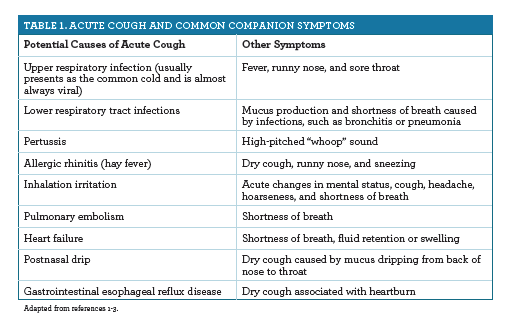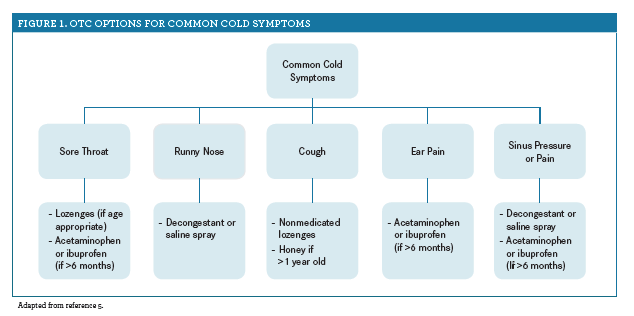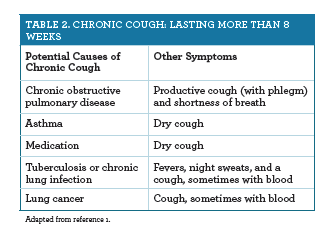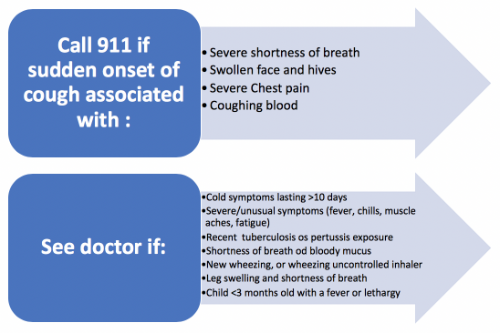Publication
Article
Pharmacy Practice in Focus: Health Systems
Approach Respiratory Illnesses Rationally
Author(s):
When patients present with respiratory illnesses, pharmacists must assess factors such as comorbidities, symptoms and symptom control, medication history, and adverse effects.
When patients present with respiratory illnesses, pharmacists must assess factors such as comorbidities, symptoms and symptom control, medication history, and adverse effects. The first question they should ask is, “Does this patient have a known respiratory diagnosis?” While investigating accessible health records, including the patient’s pharmacy profile, in search of a diagnosis, it is important to keep an eye out for comorbidities that can affect treatment choice.
Next, pharmacists can evaluate the patient’s respiratory symptom control. If the symptoms are controlled, the pharmacist should review medication doses and ensure that the patient is on the lowest dose necessary to control symptoms. If the patient lacks adequate symptom control, however, the pharmacist can evaluate the patient’s understanding of the medication regimen and ability to use devices, if the regimen requires them.
If the patient is adherent to a medication regimen, the pharmacist can suggest an OTC medication or reach out to the health care provider and suggest a step-up of therapy or a dose increase.
If the patient is nonadherent, the pharmacist can assess the reason and counsel on proper medication use and techniques to help with adherence.
Finally, a pharmacist can ask patients if they are experiencing adverse effects or adverse drug reactions and suggest changes in therapy when necessary.
Cough: A Common Complaint
A cough is a nonspecific symptom that may signify a number of potential health concerns. A cough can be classified based on its duration. If the cough lasts for up to 3 weeks, it is considered acute; 3 to 8 weeks, subacute; and more than 8 weeks, chronic.1
Acute Cough
An acute cough has many potential causes, and the patient’s symptoms and medical history may serve as clues (table 11-3).

Common Cold
The common cold is the most frequent cause of an acute cough. This mild upper respiratory viral illness is usually caused by rhinovirus. Adults average 2 to 3 colds annually, while children average more.4 Symptoms can be alleviated with OTC medications (figure 15). Patients can also use nonpharmacological options, including avoiding irritants such as smoke, drinking water, instilling saline drops or spray in the nose, and using a cool vaporizer or a humidifier. If the cough lingers, a comorbidity may be the cause (table 21).


Chronic Illness and Red Flags
Asthma and chronic obstructive pulmonary disease (COPD) are the most common chronic respiratory illnesses. In 2016, 26.5 million Americans had active asthma.6 Chronic lower respiratory disease, primarily COPD, was the third-leading cause of death in the United States in 2014.7 Pharmacists must assess patients’ symptom control and counsel patients on proper inhaler technique and regimen adherence, as described above.
Certain red flags suggest serious health concerns (figure 21,4). When speaking with patients, always look for these concerning symptoms and know when to suggest a visit to the doctor or emergency department.

References
- Cough symptoms, causes and risk factors. American Lung Association website. lung.org/lung-health-and-diseases/lung-disease-lookup/cough/coughsymptoms-causes-risks.html. Updated March 13, 2018. Accessed January 29, 2019.
- Bronchitis. Mayo Clinic website. mayoclinic.org/diseases-conditions/bronchitis/symptoms-causes/syc-20355566. Accessed January 29, 2019.
- Heart failure. Heart Rhythm Society website. hrsonline.org/Patient-Resources/Heart-Diseases-Disorders/Heart-Failure. Accessed January 29, 2019.
- Common colds: protect yourself and others. CDC website. cdc.gov/features/rhinoviruses/index.html. Updated February 11, 2018. Accessed February 28, 2019.
- Antibiotic prescribing and use in doctor’s offices: symptom relief. CDC website. cdc.gov/antibiotic-use/community/for-patients/symptom-relief.html#over-the-counter. Updated April 17, 2015. Accessed January 29, 2019.
- Asthma: most recent asthma data. CDC website. cdc.gov/asthma/most_recent_data.htm. Updated May 15, 2018. Accessed January 29, 2019.
- }Chronic obstructive pulmonary disease (COPD): basics about COPD. CDC website. cdc.gov/copd/basics-about.html. Reviewed June 5, 2018. Accessed January 29, 2019.







